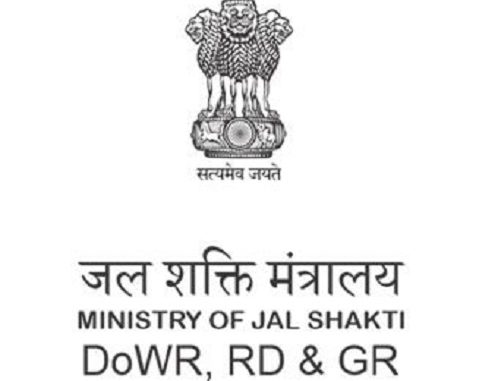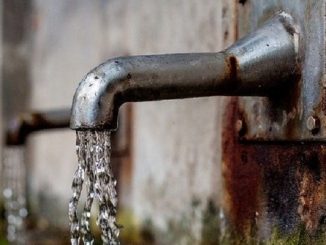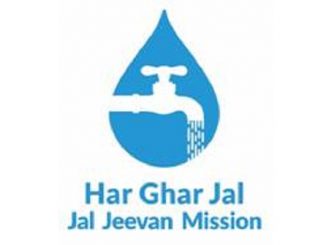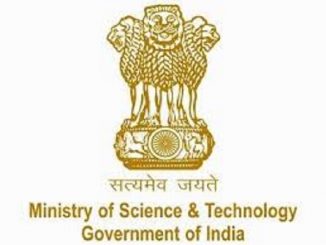
Sep 8: National Jal Jeevan Mission, Ministry of Jal Shakti held a webinar today on the planning, implementation, and monitoring of outputs & outcomes of the flagship program, Jal Jeevan Mission. The webinar was attended by about 2,500 State, district, and block officials of Public Health Engineering Departments/ Rural Water Supply Departments of various States/ UTs.
Jal Jeevan Mission is under implementation in partnership with States with an aim to ensure every rural household of the country gets assured drinking water supply in adequate quantity and of prescribed quality on regular and long-term basis at affordable service delivery charges leading to improvement in their living standard. The major objectives of the mission are to ensure water supply to every home as well as focus on functionality of water supply systems on long-term basis, decentralized operation & management arrangements and water quality surveillance by the local community.
The webinar held today used short audio-visual clips and power point presentations explaining the vision and ethos of Jal Jeevan Mission. The key note address was delivered by Additional Secretary and Mission Director, National Jal Jeevan Mission, Shri Bharat Lal, who elaborated the essence of the ambitious programme that aims to improve the lives of people living in rural areas.
‘This program is different from earlier programmes and requires innovation and a focussed approach’- mentioned Shri Lal and then stressed on the salient features of the mission thereby emphasising on the responsibility of various stakeholders. The Ministry officials made a detailed presentation on the targets & achievements of the Mission. It was noted that the country has around 5.35 Crore rural families enabled with tap water connection; and 100% tap connections in 47,00 villages, 351 blocks and 9 districts. In the whole country, more than 2 Crore households have been provided tap water connection in last one year since the launch of the mission i.e. 15 August, 2019. More than 1 lakh families are given tap water connections on daily basis. The speed and scale of work being done under Jal Jeevan Mission was discussed in detail. As of now, more than 28% rural homes are getting piped water supply, which has not only reduced the drudgery of rural women, but assured their security and dignity.
While all the States/ UTs are competing with each other to achieve 100% FHTC status; Bihar, Goa, Telangana and Puducherry are emerging as frontrunners to accomplish the target by 2021 itself. The healthy competition among States/ UTs to outperform each other was discussed. The presentation also talked about the various issues, challenges as well as opportunities for the mission.
As envisaged under the mission, the local village community/ Gram Panchayats and or its sub-committee i.e. Village Water & Sanitation Committee/ Paani Samiti to be involved in planning, implementation, management, operation and maintenance of water supply systems in villages to ensure long-term sustainability of the ongoing efforts to achieve drinking water security. It was explained in details the importance of Village Action Plan, District Action Plan and State Action plan. Retrofitting and augmentation of existing Piped water supply (PWS) systems was highlighted and States were asked to start the works in all such villages in a campaign mode, so that the remaining households belonging to poor and marginalized people in villages/ habitations can get tap water at earliest. Officials were asked to focus on priority areas like aspirational districts, water quality-affected areas, drought & desert prone areas, SC/ ST dominated habitations, Sansad Adarsh Gramin Yojna villages, etc.
It was highlighted that every source needs to be tested once for chemical parameters and twice for bacteriological contamination in a year as a part of water quality monitoring. State was asked to carry out the testing of all water sources accordingly. It is required to upgrade and to obtain NABL accreditation of all the laboratories in the State, it was urged to plan for obtaining NABL accreditation for maximum possible number of laboratories during 2020-21.It was also told to open water quality laboratory facilities to general public.
The Department of Drinking Water & Sanitation has a robust integrated management information system (IMIS). It was explained in details how the JJM-IMIS can evolve as a potent tool for planning & monitoring. It was also mentioned that IMIS will be helpful to avoid wasteful expenditure and can be useful in measurement and monitoring of water service delivery. Further, it was presented in detail the relevance of IoT based sensors in measurement and monitoring of water supply. The importance and modalities of Public Grievance Redressal system was underlined. Few States like Kerala, Gujarat and Odisha are already using ‘1916’ helpline number; other States were urged to adopt similar mechanism to resolve various public grievances related to drinking water supply in rural areas.
Disclaimer: We donot claim that the images used as part of the news published are always owned by us. From time to time, we use images sourced as part of news or any related images or representations. Kindly take a look at our image usage policy on how we select the image that are used as part of the news.


